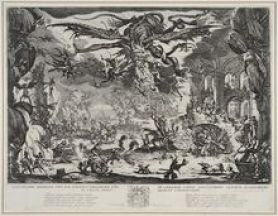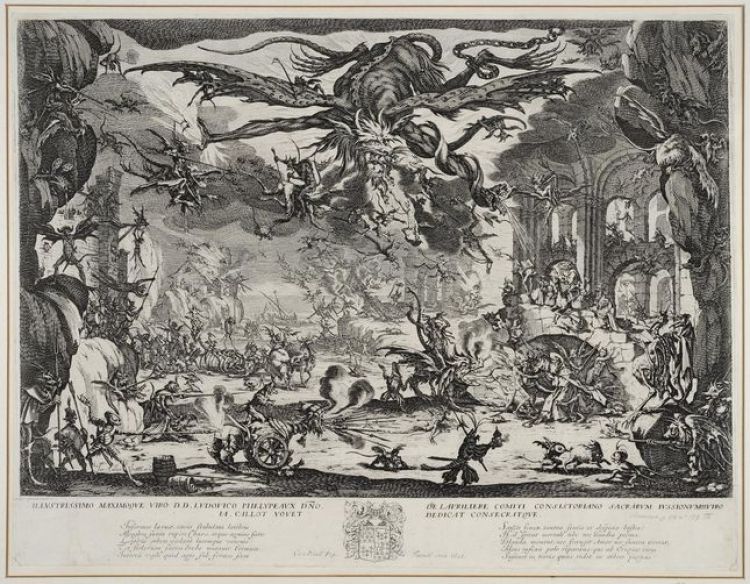The Temptation of Saint Anthony

Jacques Callot etched the temptation of Saint Anthony on two occasions. The first version, dating from 1616 or 1617, was printed in only a few copies before the copper matrix was destroyed. Callot returned to the subject towards the end of his life, producing a work that proved to be his masterpiece and one of the most remarkable engravings of the 17th century.
The subject of Saint Anthony's torments was frequently taken up by artists of the late 15th and 17th centuries because of the healing virtues attributed to the saint.
The scene, overshadowed by the mighty figure of a devil in chains, swarms with nightmarish figures. The omnipresent scatological features evoke the symptoms of ergot poisoning, known as Saint Anthony's fire. The tormented figure of Saint Anthony, relegated to the lower right-hand corner of the composition, becomes almost incidental.
